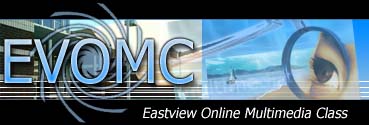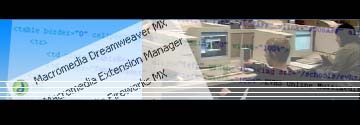|
World Wide Web
A system of linked servers that distribute pages of text, graphics,
and multimedia information to users all over the world.
HTML (HyperText Markup Language)
The language of the World Wide Web...a set
of simple codes that tells a computer how to display the text, graphics, and
other objects that comprise a Web page. The central functional element of HTML
is the "HyperText link," which is a word or picture you can click
on to retrieve another Web page and display it on your computer screen.
URL (Uniform Resource Locator)
A fancy term for the address of a World Wide Web page or other resource.
Host: A computer that provides services to other "client" computers
on a network. On the Internet, a single computer often provides multiple host
functions, such as processing e-mail, serving Web pages, and running applications.
Server: A computer, or application that provides files, data, or some other
central body of information to multiple "client" computers by means
of a network.
Starter sites:
http://www.walshaw.com/
http://www.weballey.net/index.html
http://www.pagetutor.com
Where do we start?
I. Understanding the Web
| September 2002 |
605.6 million |
9.16 |
Nua Ltd |
February 2002
|
544.2 million |
8.96 |
Nua Ltd |
| December 2001 |
527.57 million |
8.69 |
Nua Ltd |
| December 2000 |
451.04 million |
7.43 |
Nua Ltd |
| September 1999 |
201.05 million |
4.78 |
Nua Ltd |
| December 1998 |
160 million |
3.91 |
IDC |
| December 1997 |
70 million |
1.71 |
IDC |
| December 1996 |
36 million |
0.88 |
IDC |
| December 1995 |
16 million |
0.39 |
IDC |
- A Brief History of the Internet
- How Many People are Online?
- URL Addresses
- Folders – Everything on your web page must be in your folder (pictures,
videos, etc.)
II. HTML and Softwares
III. Macromedia Dreamweaver vs. Other Authoring Tools
IV. Using Macromedia Dreamweaver
- Automatically converts to HTML
- Easily create tables to organize text
- Creating links (page to page)
- Understanding the interface
V. Creating your page
- Edit button in web browser
- View Code and Design (to see and learn HTML as you create)
- Preview pages in browser (Internet Explorer)
- Understand that everything must be saved in your folder and folder must
be on web server.
On
to Advanced Web Page Information
|



